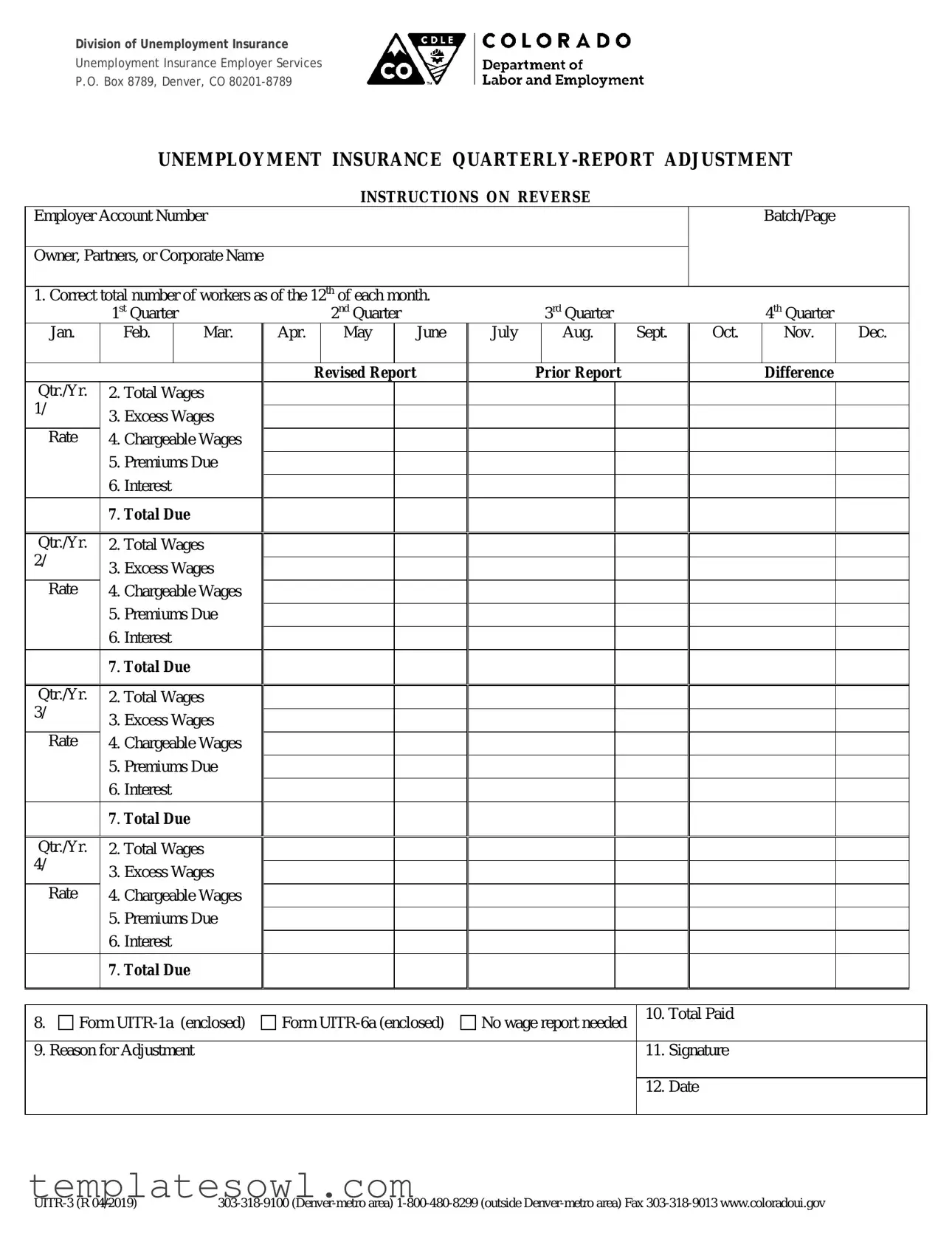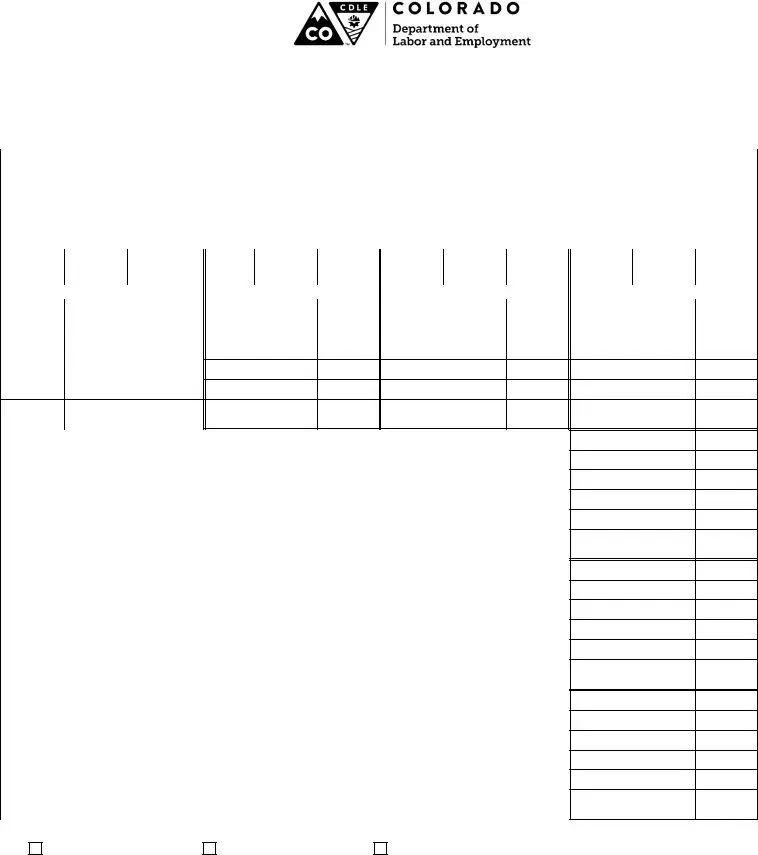What is the Co Uitr 1 form?
The Co Uitr 1 form is used for filing adjustments related to Unemployment Insurance Quarterly Reports in Colorado. Employers must submit this form if they need to correct any aspect of their previously filed quarterly reports, such as the number of workers or total wages reported.
When should I use the Co Uitr 1 form?
You should use the Co Uitr 1 form whenever you discover inaccuracies in your previously submitted Unemployment Insurance Quarterly Report (UITR-1). This could include errors like the wrong total number of employees or incorrect wage amounts. It's essential to address these discrepancies promptly to avoid any penalties.
How do I fill out the Co Uitr 1 form?
To fill out the Co Uitr 1 form, start by entering your Employer Account Number and your business name. Then, under each quarter, provide the correct total of workers, total wages paid, excess wages, chargeable wages, and any premiums due. Ensure you also document the reason for the adjustment in the designated space. It’s important to refer to the guidelines for entering specific amounts to ensure accuracy.
What is the difference between chargeable wages and excess wages?
Chargeable wages refer to the wages paid to an employee that are subject to unemployment insurance premiums, which has a limit per worker. For 2019, the chargeable wage limit is $13,100. Excess wages are those that exceed this limit during the calendar year. Only chargeable wages count toward your unemployment insurance premiums.
What if I report wages for multiple quarters?
If you are correcting wage reports for multiple quarters, you will need to fill out and attach Form UITR-6a, which allows you to report adjustments across more than one quarter. This form must accompany your Co Uitr 1 form to properly document the changes.
Is there a penalty for late adjustments?
Yes, if your adjustments result in an increase in premiums, interest may be charged on late payments. The interest rate is 1.5 percent per month or any part of a month for premiums paid after their due date. It’s advisable to handle adjustments and payments promptly to avoid these additional costs.
Who can I contact for help if I have questions about the Co Uitr 1 form?
If you have any questions regarding the Co Uitr 1 form or the adjustment process, you can contact Unemployment Insurance Employer Services at 303-318-9100 for those in the Denver-metro area or at 1-800-480-8299 for those outside that area. They are well-equipped to assist you.
Do I need to include supporting documentation with my Co Uitr 1 form?
Yes, if you are correcting wages, you should attach Form UITR-6a if adjustments are necessary for multiple quarters. Ensure that you keep a copy of any communications and documents submitted for your records.
What happens after I submit the Co Uitr 1 form?
After you submit the Co Uitr 1 form, it will be processed by the Division of Unemployment Insurance. If they need additional information or clarification, they may contact you. It’s important to monitor your correspondence and ensure you respond promptly to any follow-up queries.
Can I submit the Co Uitr 1 form electronically?
Currently, the submission process for the Co Uitr 1 form may vary. It is advisable to check the Division of Unemployment Insurance's website or contact their office for the most current submission procedures, including options for electronic filing, if available.

